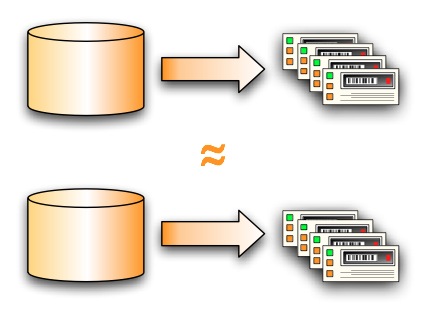I’d like to suggest that companies be prepared to make (and keep!) 7 new years resolutions when it comes to the field of backup and recovery:
- We will test our backups: If you don’t have a testing regime in place, you don’t have a backup system at all.
- We will duplicate our backups: Your backup system should not be a single point of failure. If you’re not cloning, replicating or duplicating your backups in some form, your backup system could be the straw that breaks the camel’s back when a major issue occurs.
- We will document our backups: As for testing, if your backup environment is undocumented, it’s not a system. All you’ve got is a collection of backups, which, if the right people are around at the right time and in the right frame of mind, you could get a recovery from it. If you want a backup system in place, you not only have to test your backups, you also have to keep them well documented.
- We will train our administrators and operators: It never ceases to amaze me the number of companies that deploy enterprise backup software and then insist that administrators and operators just learn how to use it themselves. While the concept of backup is actually pretty simple (“hey, you, back it up or you’ll lose it!”), the practicality of it can be a little more complex, particularly given that as an environment grows in size, so does the scope and the complexity of a backup system. If you don’t have some form of training (whether it’s internal, by an existing employed expert, or external), you’re at the edge of the event horizon, peering over into the abyss.
- We will implement a zero error policy: Again, there’s no such thing as a backup system when there’s no zero error policy. No ifs, no buts, no maybes. If you don’t rigorously implement a zero error policy, you’re flipping a coin every time you do a recovery, regardless of what backup product you use. (To learn more about a zero error policy, check out the trial podcast I did where that was the topic.)
- We will appoint a Data Protection Advocate: There’s a lot of data “out there” within a company, not necessarily under central IT control. Someone needs to be thinking about it. That someone should be the Data Protection Advocate (DPA). This person should be tasked with being the somewhat annoying person who is present at every change control meeting, raising her or his hand and saying “But wait, how will this affect our ability to protect our data?” That person should also be someone who wanders around the office(s) looking under desks for those pesky departmental servers and “test” boxes that are deployed, the extra hard drives attached to research machines, etc. If you have multiple offices, you should have a DPA per office. (The role of the DPA is outlined in this post, “What don’t you backup?“)
- We will assemble an Information Protection Advisory Council (IPAC): Sitting at an equal tier to the change control board, and reporting directly to the CTO/CIO/CFO, the IPAC will liaise with the DPA(s) and the business to make sure that everyone is across the contingencies that are in place for data protection, and be the “go-to” point for the business when it comes to putting new functions in place. They should be the group that sees a request for a new system or service and collectively liaises with the business and IT to ensure that the information generated by that system/service is protected. (If you want to know more about an IPAC and its role in the business, check out “But where does the DPA fit in?“)
And there you have it – the new years resolutions for your company. You may be surprised – while there’ll be a little effort getting these in place, once they’re there, you’re going to find backup, recovery, and the entire information protection process a lot easier to manage, and a lot more reliable.
